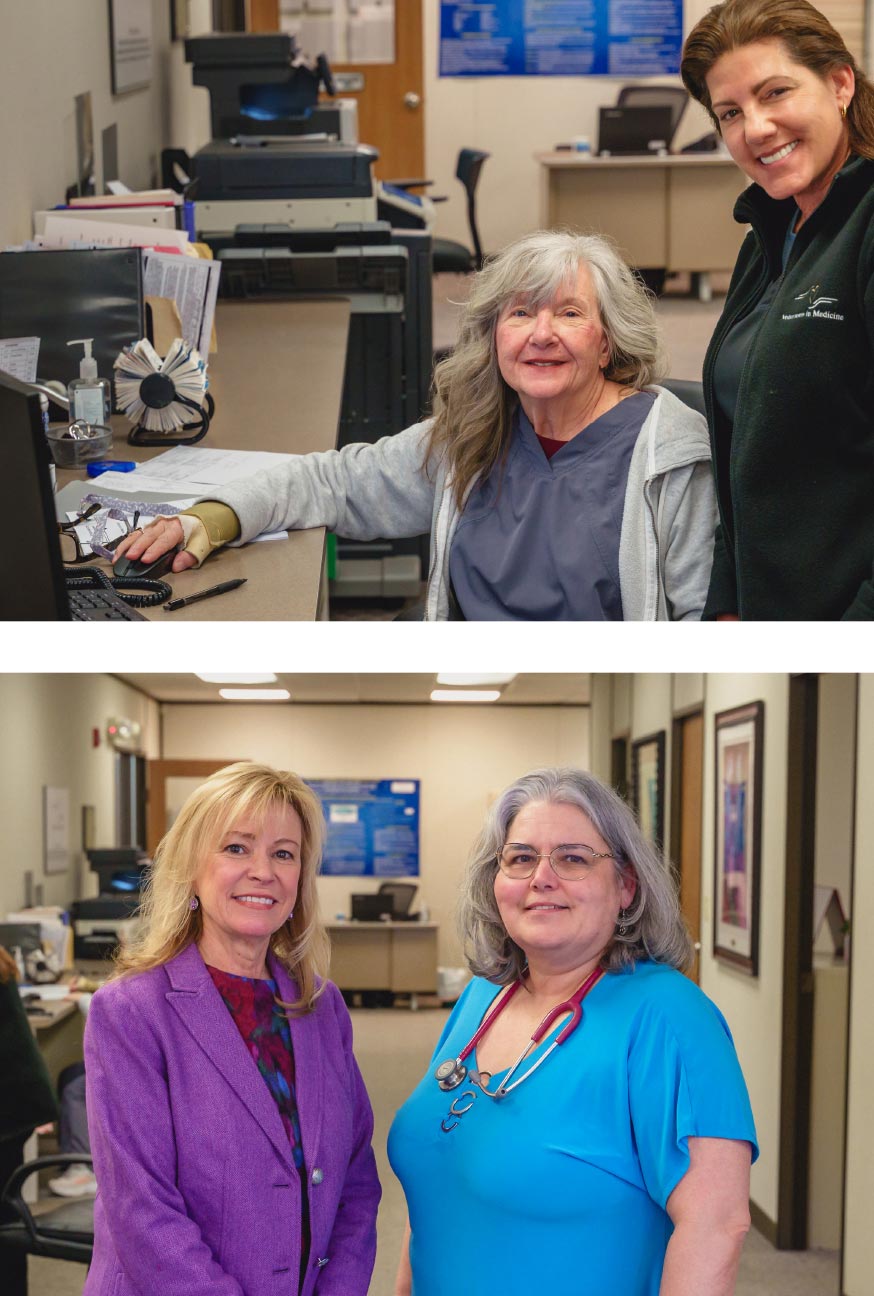

For the past 16 years, Volunteers in Medicine (VIM) has provided free medical, dental, behavioral health, and specialty care to working uninsured and underinsured populations in Luzerne County. As the only full-service, full-time health care facility of its kind in Northeast Pennsylvania, VIM is a hub of daily activity for wellness, hope, and healing.
To achieve its mission and serve almost 50 people per day, VIM relies solely on donations, grants, and special event revenues. VIM does not receive any federal or state funding, and staff members affectionately refer to the clinic as “for the community, by the community.”
VIM is strategically situated on a main street and bus route in the City of Wilkes-Barre, which currently grapples with a 17.8 percent poverty rate. Across the county, more than 35,000 employed residents lack health insurance, yet they still need—and deserve—access to comprehensive care. Along with providing primary care, VIM’s oral health clinic remains busy every day. In the same location where a patient can be seen for a sick visit and receive their medication, the oral health staff offers a full range of services, from dental hygiene education and routine cleanings to extractions and dentures.
The cluster of health services in one place proves especially valuable for patients with transportation challenges. Excitingly, VIM has earned national Patient-Centered Medical Home (PCMH) accreditation for the past five years, highlighting its consistent delivery of quality, comprehensive patient care. Only six out of 1,800 free clinics nationwide have earned PCMH designation, and the team is particularly proud of this achievement. Equally impressive is the fact that VIM is the only free clinic in the nation to have earned a Health Equity certification.
“We want to provide excellent care to all people who walk through our doors and trust us with their care. Yes, we are a free clinic, but our patients deserve just as much attention as someone who is privately insured. Our staff always focuses on respect, sensitivity, and quality of care. I think our patients really feel that commitment when they visit us here,” shared Kelly L. Ranieli, VIM’s Executive Director.
A large percentage of VIM’s patients are Hispanic, and for years, communicating with non-English-speaking patients had been a significant challenge. Today, the clinic uses a certified medical interpretation program (LanguageLine) almost daily. Patients and staff can communicate in their native language via video or phone call, so all parties feel comfortable, heard, and respected. To build on this commitment, all new volunteers also receive cultural sensitivity training as part of onboarding.
Outside of primary care and oral health, VIM covers all patient costs associated with imaging (ultrasounds and X-rays) and lab services. Through robust partnerships with community-focused providers, VIM’s patients can also receive whole-person care beyond the walls of the clinic. Referrals for eye care, orthopedics, pain management, physical therapy, cardiology, and gastroenterology are common and highly valued by those they serve. Partnering specialists and external providers consistently offer feedback, citing the unique opportunity to give back to the community through their services and care.
Medical and prescription costs continue to rise faster than inflation and cost-of-living raises. In response, VIM distributes more than $50,000 worth of free medications each month to patients who struggle to pay for their critical prescriptions. Such a significant distribution is made possible in part by partnerships with manufacturers and a local independent pharmacy that provides medications at steep discounts.
In contrast to the more hands-off model of many chain retail pharmacies, VIM encourages patients to make face-to-face appointments with a clinical pharmacist and registered dietitian. Along with medication education and prescription distribution, discussions center on wellness, medication management, and chronic disease support. The complex interplay between culture, nutrition, and health is always taken into account. VIM offers free groceries to patients each week and actively coaches patients on incorporating healthier food and adapting cooking methods to help prevent diabetes, an undiagnosed condition in nearly 23 percent of the U.S. population. Patients in need are encouraged to pick up a bag of food at the clinic—no questions asked.
With only five paid staff, VIM relies on volunteer health care professionals, students from local colleges and universities, and community members to achieve its mission. “Educating students takes time, of course, but it is so beneficial. The students learn about the realities of community health and they have a chance to connect with patients in a really beautiful way,” noted Susan Sordoni, MD, founding chair and active physician volunteer at VIM.
Some of VIM’s volunteer nurses have served for more than 15 years. A psychiatric certified registered nurse practitioner, with a highly specialized skill set, also volunteers weekly. Board member and regular volunteer Susan Prusack shared, “I love talking with patients to understand more about where they are at. We talk about what is important to them, what they worry about, and what might make their lives easier. They’re so appreciative, and there are oftentimes unique things we can do outside of health care to help. When I leave at the end of the day, I feel good, too.”
Outside of health care, VIM’s social workers continually seek new ways to make an impact. Sometimes that means helping patients find a new job; other times, it might involve obtaining a bike or securing a new apartment. The team is always exploring ways to broaden the clinic’s value within the bounds of its existing building. A possible expansion of the unused second floor is currently in the early brainstorming stage.
VIM’s model illustrates just how effective and efficient a free clinic can be. Over the years, staff have tracked the average visit cost—a startling $36—and estimate they have saved millions of dollars in high-cost emergency room charges. Ranieli noted, “We’d love to see this type of setup in other locations. What we do could be replicated—and it would be so valuable—in every county.”